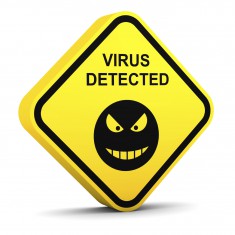Natural killer cell: A cell that can react against and destroy another cell without prior sensitization to it. Abbreviated NK cell. Natural killer cells do not attack invading organisms directly but instead destroy the body’s own cells that have either become cancerous or been infected with a virus.
NK cells are part of our first line of defence against cancer cells and virus-infected cells.
About 25 to 33 percent of white blood cells are lymphocytes. NK cells are small lymphocytes that originate in the bone marrow and develop without the influence of the thymus (The thymus is a specialized organ of the immune system. Within the thymus, T-cells mature).
 Within the ecosystem that is our body, NK cells are serious and highly selective predators: in just hours, they kill tumour or infected cells while avoiding healthy cells.
Within the ecosystem that is our body, NK cells are serious and highly selective predators: in just hours, they kill tumour or infected cells while avoiding healthy cells.
In many laboratories around the world, scientists have combined their efforts to understand how these killers eliminate their targets and only their targets, even though they lack the highly selective antigen receptor of their close cousins, the T cells. Today we know not only how NK cells are controlled but also how they in turn control other agents of the immune system.
The history of NK cells is far from over. Upon entering the intimacy of the predator, Eric Vivier and his team have discovered that natural killers do not kill as naturally as originally thought.
With other cells of the innate immune system (neutrophils, monocytes, macrophages, dendritic cells and Tγδ lymphocytes) they patrol the body (they are found in the blood but also in the liver, spleen, lungs, intestine and lymph nodes) and mark cancer or infected cells. Once identified, the diseased cell is destroyed in minutes by a mechanism known as cytotoxicity: the NK cells attack in packs by releasing substances that perforate the “skin” of their victims; this is death by cell lysis (braking down of a cell).
In addition to the knowledge that natural killer cells are effectors of innate immunity (also known as non-specific immune system and first line of defence), recent research has uncovered information on both activating and inhibitory NK cell receptors which play important function roles including self tolerance and sustaining NK cell activity.
NK cells also play a role in adaptive immune response (also known as the acquired immune system), numerous experiments have worked to demonstrate their ability to readily adjust to the immediate environment and formulate antigen-specific immunological memory, fundamental for responding to secondary infections with the same antigen. The role of NK cells in both the innate and adaptive immune responses is becoming increasingly important in research utilizing NK cell activity and potential cancer therapies.
So how do the NK cells manage to distinguish a diseased cell from a healthy cell?
Eric Vivier’s and his team was instrumental in solving this puzzle.
“In order to distinguish the normal from the pathological, the NK cell has developed a sophisticated detection system,” says Eric Vivier. “It is based on surface radar coupled to intracellular signalling pathways, that transmit information to the cell nucleus so that it makes its decision: kill or not kill.
In this context how does it make its decision? ”During evolution, it has simply learned to count!” said Eric Vivier. “The NK cell sums the signals it receives: it spares healthy cells that send inhibitory signals and few or no activating signals, while it kills cancer cells or infected cells that not only deliver ‘danger signals’ but also become unable to send inhibitory protective signals. In sum, the NK cell works much like an ideal drug: effective and nontoxic.”
References:
http://www.medterms.com/script/main/art.asp?articlekey=21219
http://en.wikipedia.org/wiki/Natural_killer_cell
http://www.ciml.univ-mrs.fr/science/lab-eric-vivier/beginners
http://www.britannica.com/EBchecked/topic/406275/natural-killer-cell








